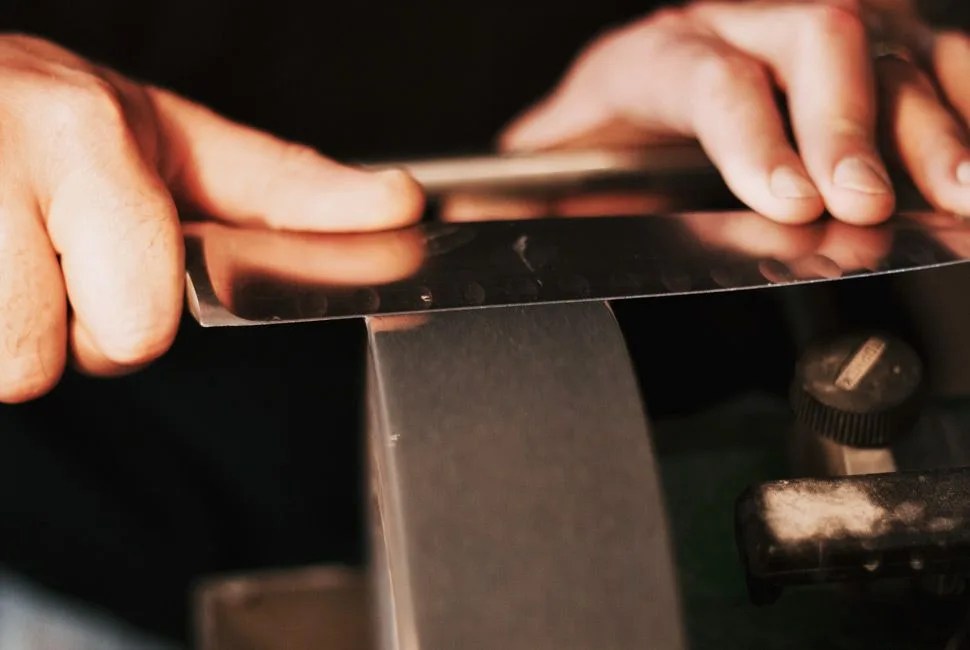7 photos
In the long list of skills grandpa knew better than us, there’s the ancient art of knife sharpening. It takes more than a honing steel and a couple swift swipes of the blade to tighten an edge: there’s grinding, stoning, rinsing, repeating and polishing. Fortunately, unless you’ve been clearing underbrush with your chef’s knife, it can be sharpened at home with a few small tools and the right knowledge.
Josh Donald is the co-proprietor, along with his wife Kelly Kozak, of Bernal Cutlery, which fine-tunes the steel of the best chefs in San Francisco (like Stuart Brioza of State Bird Provisions). Knife sharpening relies on feel, and Donald’s early start (with a pocket knife at the age of five) got him plenty of touches before he honed his skill. He tinkered for years before opening a shop at age 30. He advised us on the samurai way — Japanese whetstone sharpening. His primer gives an overview of whetstone sharpening, but check in with a local shop for a sharpening class on the intricacies specific to your cutlery.
1 Assess the damage. Check the blade edge for nicks and pits, and see if the knife has a clean curve in the taper from tip to end. Oftentimes, supermarket sharpening can be a rush job, and the sharpening will do more damage than good. A knife that shows significant wear requires more intensive TLC, starting with the grinding wheel to reshape the bevel (Step 2). If the knife is in good shape, skip to Step 3 (which you can do at home).
2 Grind the wheel. The wheel uses a coarse stone to literally re-shape the knife’s edge. This is used in extreme cases of knife abuse. With the coarse grit on the wheel and a locking mechanism that can hold the knife, the blade’s edge can be sculpted to a proper and functional edge. It’s best to leave this step to the experts.
Daily Knife Maintenance
Between sharpening the knife — which should happen, Donald recommends, after every eight hours of use — there are some simple ways to keep your edge.







